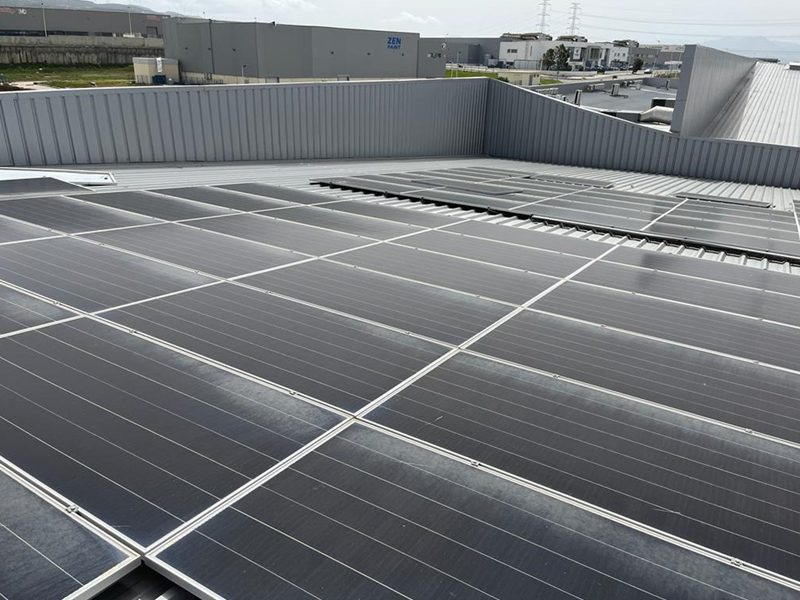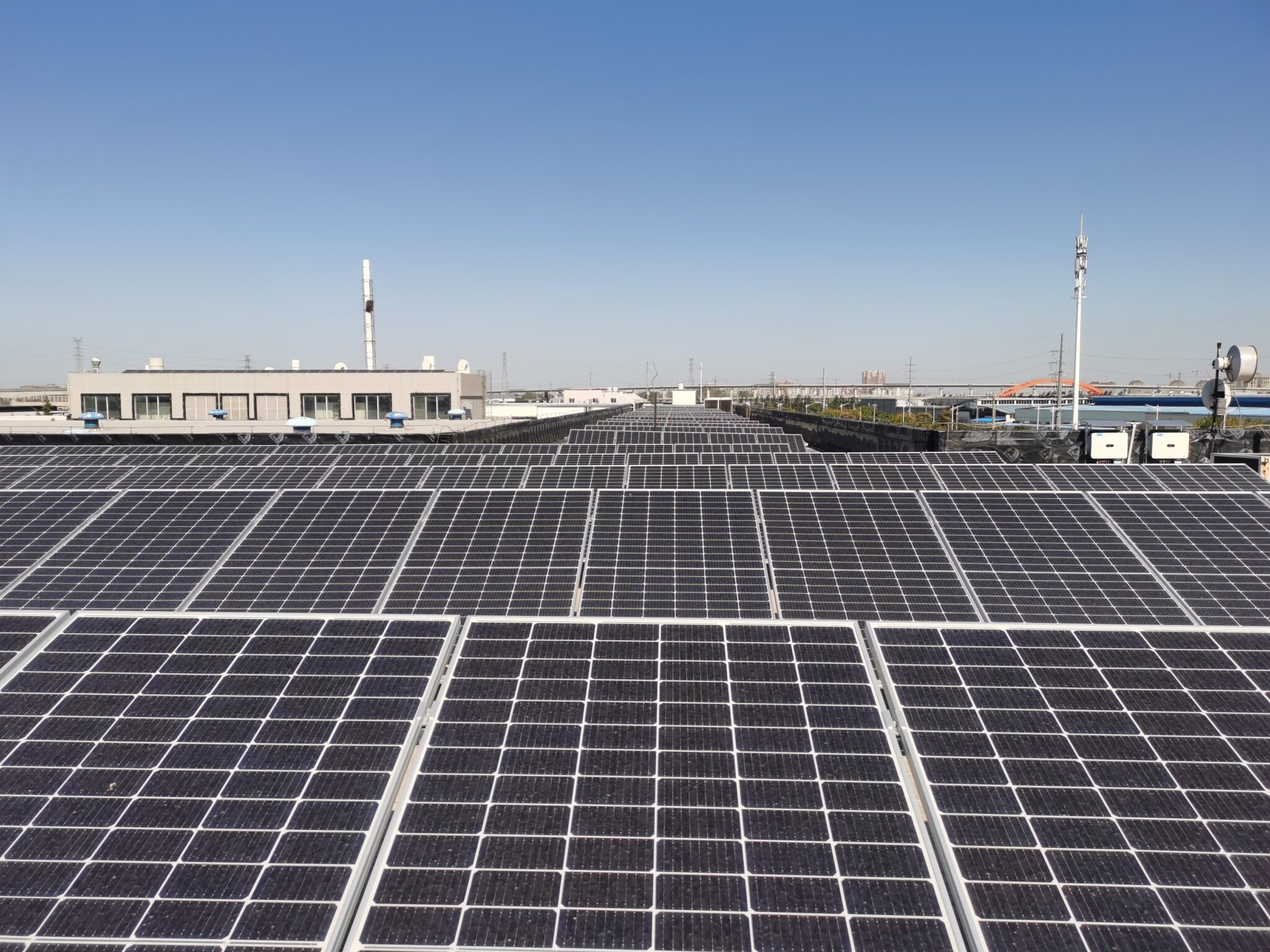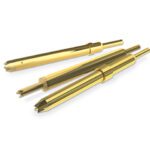TE Connectivity’s Sustainability Efforts Pay Off
The company reduced its greenhouse gas emissions by 72% in just three years and improved its environmental impact by implementing efficient operational strategies across the supply chain. New technologies are part of the solution.

TE Connectivity’s products are part of sustainability solutions around the world, connecting solar energy systems, wind turbines, electric vehicles, smart grids, and other energy-efficient technologies. The same expertise is also impacting the company’s own operations — in just three years, the company has reduced its greenhouse gas emissions by a stunning 72%, as well as reduced materials waste, water consumption, and increased recycling and energy production via solar technologies. These changes have been inspired in large part due to employee efforts.
“We have an incredibly engaged and concerned employee workforce that is driving these efforts. They made it clear that this needs to be a company priority and they have made it possible for us to achieve these results,” said Holly Webdale, VP, Environmental, Social & Governance, Supply Chain, TE Connectivity. “Sustainability is now part of our mission.”
This week, the company will mark Earth Week with a series of webinars that share these achievements with employees and chart a roadmap for continued progress on environmental initiatives. The company also is examining its supply chain to further integrate efficiencies into its operations. TE’s latest Corporate Responsibility Report details the progress the company is making and shares insights to inspire other companies.
“Making these changes, especially with regards to energy use, pays for itself very quickly,” said Webdale. “One of our factories alone has eliminated 57,000 tons of CO2 emissions through the reduced use of resins in manufacturing. Another site has reduced water consumption by 50%, and another is now generating 15% of its power from on-site solar panels. One entire business unit has been able to dramatically reduce waste and is now recycling 97% of all materials. And one of our business segments is on track to reduce CO2 emissions by 267,000 tons in 2024.”

Solar panels at TE’s Appliances Qingdao Site
As the devastating effects of climate change accelerate, the electronics industry is uniquely poised to be part of technology-based solutions that reduce humanity’s dependance on fossil fuels across every industry. TE’s sustainability progress shows that positive change can happen quickly. “We are very excited about our progress in emissions reductions,” said Webdale. “We focused on how we are operating our facilities, creating a standard of operation that drives optimal efficiency at our sites, investing in our equipment and buildings to assure our equipment is running in an optimal way, and investing in renewable energy.”
Webdale joined TE is 2018, first in facilities and construction, where she oversaw energy initiatives and emissions reductions efforts, moving into her current role in 2022, where she implemented the same strategies across the entire supply chain, examining the company’s impact on the earth and climate from multiple perspectives. “We focused on incremental degrees of change at first, then quickly expanded that horizon when we fully understood that making changes can make a real impact on the Earth.”
Greening the electronics industry
It’s no secret that the electronics industry’s impact on the environment has not always been great. In just one measure, electronic waste, or e-waste, continues to be the devastating legacy of humanity’s engagement with technology; in 2022, the world generated 62 million metric tons of electronic waste, and before those products became waste, their production, distribution, and use impacted the environment on every level. There is an urgent need for the industry to implement sustainability practices across the supply chain. As one of the largest connector companies in the world, TE’s efforts will have a sizable impact, but Webdale says small and mid-size companies can also make a difference.
“My advice to other manufacturing companies would be to look first in your own operations and identify which types of emissions are your top emitters. Are you a company with more fuel or electricity use? Based on that evaluation, create a priority list of those top emitters, and focus on a way to be more efficient in that area,” she said. “For example, if electricity use is a high use for your company, map what equipment utilizes the most electricity and find ways to reduce this amount. At TE, we know that our air compressors use a lot of energy. That is why we have created air leak detection processes to identify and eliminate leaks to cut down on energy use in our operating standards.”
Webdale said first tackling the “low-hanging fruit” — fuel use and electricity — can bring about immediate improvements in emissions and also potentially pay for itself in reduced energy costs. Updating old equipment is a place to start. In the U.S., the Department of Energy offers free industrial efficiency and decarbonization resources and training. “They are partnering with companies that want to tackle this and making it easier to understand and implement strategies that will have the biggest impacts.”

TE Energy Kunshan site launched a rooftop solar project in April 2023 and installed about 4,000 square meters of photovoltaic panels on the roof of the three buildings.
Energy use is just part of the equation. Webdale says that TE has also reduced the amount of hazardous waste it produces by 48%, increasing its focus on recycling and reclamation, modifying equipment, and engineering waste out of its product designs. Another area the company is working on is its water use, especially in regions that are facing drought. “We have water metering in place to understand real time how much water is being withdrawn. This is a standard at our water scarce sites. Additionally, we have added controls to equipment to create on demand systems approach versus consistent flow, we recirculate where we can, and have invested in equipment which allows us to filter and reuse approximately 90% of the water in certain high demand processes. In one of our India sites, we are rain harvesting to assist with reducing water withdrawal. In North Carolina, we are heavily focused on water sustainability by adding controls and transitioning away from continuous use to on-demand systems.”
Another area of focus is resin waste. “We use resin as the raw material to form plastic components,” said Webdale. “TE plants regrind old resin or use external re-compounding where possible. This largely depends on the product and the customer specifications. We can currently reuse up to 25% of the regrind in production. In fiscal year 2023, these methods helped our company avoid purchasing 9,500 tons of new material and preventing the release of approximately 57,000 tons of CO2 emissions from resin suppliers.”
TE implemented its Design for Sustainability Roadmap to embed sustainability throughout the design process – both when designing new products and making changes to existing products. “This includes considering customer needs, material choices, and methods to optimize design, as well as reducing supply chain, production, and end-of-life impacts,” said Webdale. The roadmap prioritizes three areas for the next three years: Climate, safer materials, and circularity. “To date, most focus has been on the climate pillar to support our science-based target commitment. Safer materials have evolved out of our long-standing efforts to stay on top of regulations that target substances that may be hazardous, to be proactive and ahead of regulation. Next, TE will look at ways we can reduce, reuse, recycle and remove waste in our products. In R&D there are activities such as designing with sustainability in mind, creating a path for products with lower global warming potential and less waste.”
Webdale says that in her time with TE, she has seen a dramatic change in the company’s approach. “It has been a great ride, and credit is really due to our employees. They want the company to be better and the passion that generates has helped make it possible.”
Learn more about TE Connectivity’s sustainability efforts.
Like this article? Check out our other Connector Industry News articles, our Medical Market Page, and our 2024 Article Archive.
Subscribe to our weekly e-newsletters, follow us on LinkedIn, Twitter, and Facebook, and check out our eBook archives for more applicable, expert-informed connectivity content.
- News From Hannover Messe 2024 - April 30, 2024
- Where in the World is Amphenol LTW’s Luc Kan? - April 23, 2024
- TE Connectivity’s Sustainability Efforts Pay Off - April 23, 2024





